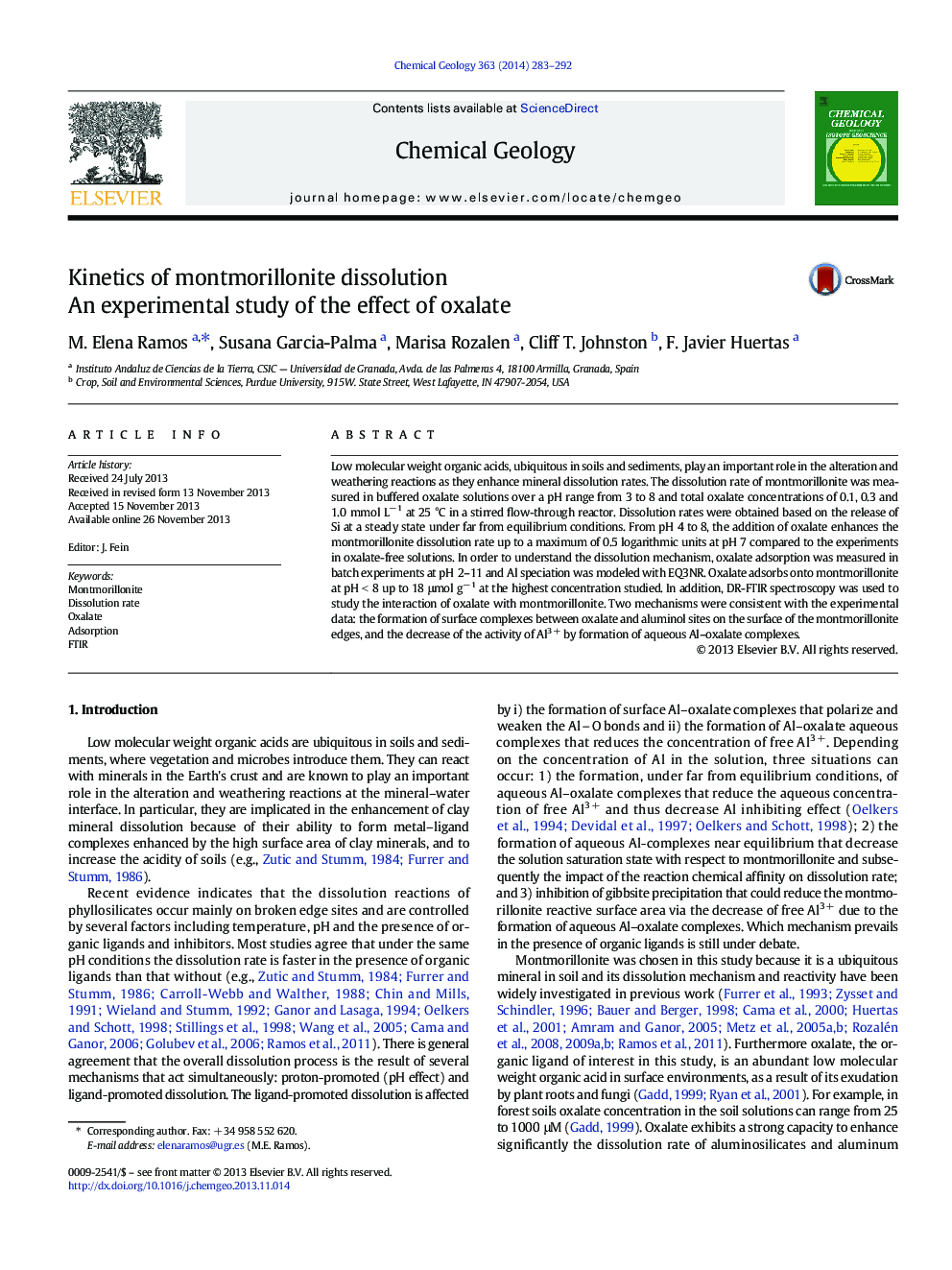| Article ID | Journal | Published Year | Pages | File Type |
|---|---|---|---|---|
| 6436707 | Chemical Geology | 2014 | 10 Pages |
Low molecular weight organic acids, ubiquitous in soils and sediments, play an important role in the alteration and weathering reactions as they enhance mineral dissolution rates. The dissolution rate of montmorillonite was measured in buffered oxalate solutions over a pH range from 3 to 8 and total oxalate concentrations of 0.1, 0.3 and 1.0 mmol Lâ 1 at 25 °C in a stirred flow-through reactor. Dissolution rates were obtained based on the release of Si at a steady state under far from equilibrium conditions. From pH 4 to 8, the addition of oxalate enhances the montmorillonite dissolution rate up to a maximum of 0.5 logarithmic units at pH 7 compared to the experiments in oxalate-free solutions. In order to understand the dissolution mechanism, oxalate adsorption was measured in batch experiments at pH 2-11 and Al speciation was modeled with EQ3NR. Oxalate adsorbs onto montmorillonite at pH < 8 up to 18 μmol gâ 1 at the highest concentration studied. In addition, DR-FTIR spectroscopy was used to study the interaction of oxalate with montmorillonite. Two mechanisms were consistent with the experimental data: the formation of surface complexes between oxalate and aluminol sites on the surface of the montmorillonite edges, and the decrease of the activity of Al3 + by formation of aqueous Al-oxalate complexes.
